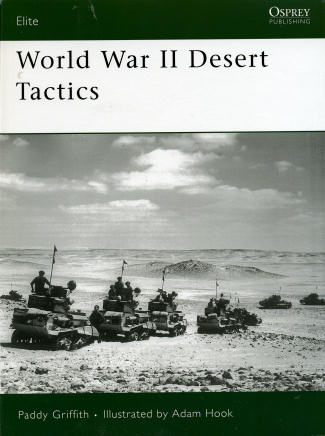 After
the debacle (for the British) in France, the first real opportunity that they
had to fight the Axis was when Italy entered the war and began its North African
campaigns. Fighting in the desert was the first time that truly mechanized
warfare was fought. No mules, horses or camels were used to haul troops or bring
in supplies. Everything was hauled by trucks. Much of this was due to the fast
moving pace of the various armies as they fought back and forth across the coast
of Egypt, Lybia and Tunisia.
After
the debacle (for the British) in France, the first real opportunity that they
had to fight the Axis was when Italy entered the war and began its North African
campaigns. Fighting in the desert was the first time that truly mechanized
warfare was fought. No mules, horses or camels were used to haul troops or bring
in supplies. Everything was hauled by trucks. Much of this was due to the fast
moving pace of the various armies as they fought back and forth across the coast
of Egypt, Lybia and Tunisia.
From the beginning, there was a distinct difference in the
way that the Axis and Allies (and in this case we mean the British) fought the
war. The Germans had been using the combined arms method where infantry, tanks
and anti-tank units fought as a whole. The British, however, used their three
main sections of the army independently. Tanks were seen as the 'ships of the
desert' and were involved in complex movements. Infantry was bereft of much of
its tank support except for the very slow and heavily armored 'I-tanks' like the
Matilda. Anti- tank guns were in fixed positions awaiting the Germans and
Italians to move into range.
Thanks to the poor British tactics and equally poor tanks,
the Germans, who were generally outnumbered in all categories, were able to
pretty well control the battlefield. It wasn't until late 1942 when the British
got a commander that realized that the tactics of the past were not working and
started using basically the same ones as the Germans had for the last two years.
This and the increasing flood of men and materials to the Allied side turned
things around.
Paddy Griffith takes an in-depth look at the situation of
desert warfare of the time. He shows how past conceptions of 'how to do things'
either hurt or helped the opposing sides. This includes the way that warfare was
fought without going into a lot of detail of the various battles. Much success
or failure was due to the ability (or lack thereof) of one side to take
advantage of situations. This could be due to leadership, communications,
equipment or a combination of them all. The book is superbly illustrated by Adam
Hook and further enhanced by a raft of period photos that help the reader
understand some of the complexities of the situation.
It is a book of a time when both sides were learning what
worked and what didn't. A most engrossing read that I am positive you will also
enjoy.
March 2008
For more on the complete line of Osprey books,
visit www.ospreypublishing.com. In the US, it is
Osprey Direct at 44-02 23rd St, Suite 219, Long Island City, NY 11101., where you can
get a catalogue of available books.
If you would like your product reviewed fairly and quickly, please contact
me or see other details in the Note to
Contributors.
 After
the debacle (for the British) in France, the first real opportunity that they
had to fight the Axis was when Italy entered the war and began its North African
campaigns. Fighting in the desert was the first time that truly mechanized
warfare was fought. No mules, horses or camels were used to haul troops or bring
in supplies. Everything was hauled by trucks. Much of this was due to the fast
moving pace of the various armies as they fought back and forth across the coast
of Egypt, Lybia and Tunisia.
After
the debacle (for the British) in France, the first real opportunity that they
had to fight the Axis was when Italy entered the war and began its North African
campaigns. Fighting in the desert was the first time that truly mechanized
warfare was fought. No mules, horses or camels were used to haul troops or bring
in supplies. Everything was hauled by trucks. Much of this was due to the fast
moving pace of the various armies as they fought back and forth across the coast
of Egypt, Lybia and Tunisia.